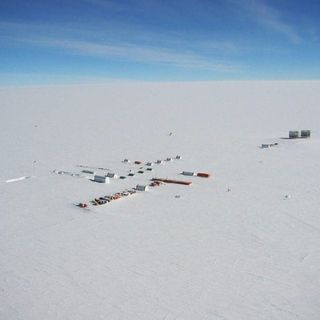In order to tackle the problem of increasing space junk, scientists from the Kyoto University in Japan have teamed up with a company specializing in construction using wooden materials — to build the world’s first wooden satellites by 2023.
The researchers believe that wood can simply burn up easily without raining debris on the Earth, or releasing any harmful substances into the atmosphere. “We are very concerned with the fact that all the satellites which re-enter the Earth’s atmosphere burn and create tiny alumina particles which will float in the upper atmosphere for many years… Eventually it will affect the environment of the Earth,” Takao Doi, Japanese astronaut and a professor at Kyoto University, told the BBC.
This appears to be the latest in a series of endeavors to avoid the accumulation of junk in space, which has led researchers to explore options like sending “space whips” to knock space debris out of orbit, employing giant magnets giant magnets, harpoons, or nets to bring the debris down, and using the Earth’s atmosphere to burn up the debris.
At present, according to the World Economic Forum, there are 6,000 satellites circling the Earth, and about 60% of those are defunct, or simply, space junk. Moreover, data by Euroconsult further shows that 990 satellites will be launched every year in this decade — a four-fold increase from the previous decade. This suggests that just by 2028, there could be 15,000 satellites in orbit — and eventually, more debris in space.
Related on The Swaddle:
A Car‑Sized Asteroid Flew By Earth at the Closest Ever Recorded Distance
In fact, just last year, the a moon-like object entered the Earth’s orbit, leading some scientists to speculate whether it is an asteroid, while others believed it could be space junk from the Cold War-era space race between the U.S. and the Soviet Union. Eventually, in December, the NASA confirmed that it was indeed space junk — a rocket booster from September 1966.
While our second moon seems relatively harmless, at least presently, that isn’t necessarily true of all space junk. Space junk can reach the earth, causing damage to life and property. And while debris from space may not have killed anyone yet, it has injured people in the past: five sailors aboard a Japanese vessel in 1969, and a woman from Oklahoma in 1997. And with the increase in space research, and subsequently, space junk since — the odds of that becoming more commonplace are increasing.
According to a theory proposed by former NASA scientist, Donald Kessler, in 1978, excessive space junk can initiate a chain reaction causing more and more objects to collide, creating newer space junk and a greater density of trash, to the point where Earth’s orbit itself becomes unusable for satellites. This could, in turn, impact humans by jeopardizing several aspects of modern life that rely on satellites, including GPS, television, and even scientific research.




